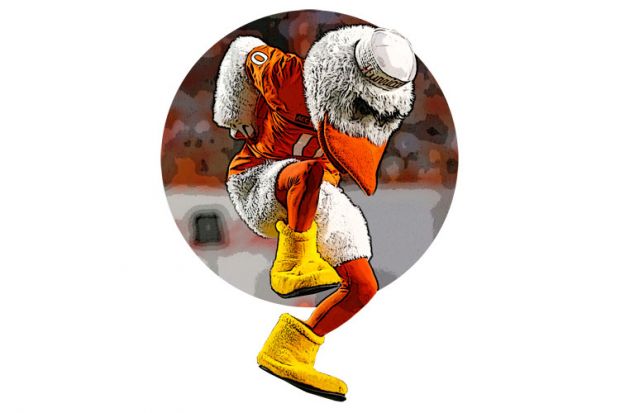Billionaire financier Warren Buffett reportedly observed during the 2008 financial crisis that “only when the tide goes out do you discover who’s been swimming naked”.
Is the tide finally turning against our beloved sport of American football?
As professors, we both stand sobered by a stream of scientific research suggesting that concussions are egregiously common and outlandishly dangerous in this game so deeply embedded in American culture and college life.
One of us was born in Oklahoma and suited up in full pads and helmet when he was 13 years old to play for his school team, the Casady Cyclones. In 1957, he watched with bewildered grief as the University of Notre Dame’s Fighting Irish beat his University of Oklahoma Sooners and ended their 47-game win streak.
He wept then and still mourns this Sooners loss.
The other spent his childhood watching the University of Miami Hurricanes, winners of five national championships, dominate the opposition each autumn weekend. The Hurricanes are led by Sebastian the Ibis, a swamp bird mythologised in Florida folklore as a cool head during hurricanes (or more accurately, they are led by a man dressed as such).
However, Sebastian lost his cool in 1989 when he was caught one step away from attacking Chief Osceola, the mascot of the Florida State University Seminoles. Handcuffed by four police officers, Sebastian sprayed the police with a fire extinguisher meant for Chief Osceola’s flaming spear.
This co-author remains vague about his feelings regarding Sebastian’s arrest.
College football throws up plenty of entertaining moments. But the academic research on football injuries is chastening.
This research includes R. W. Daniel, S. Rowson and S. M. Duma’s “Head impact exposure in youth football”, M. Fainaru-Wada and S. Fainaru’s League of Denial: The NFL, Concussions, and the Battle for Truth, and “The epidemiology of sport-related concussion” by D. H. Daneshvar et al.
Do we sit silently by as the best science offers evidence about the futility of helmets, rule changes to the game, the impact of trained medical staff assigned to teams and other attempts to minimise the effects of concussions on players?
Do we as academics describe, based on this science, American football as a true blood sport whose players on the best university teams – such as the Oklahoma Sooners and the Miami Hurricanes – remain predominantly black, poor and 19 years old?
It’s not as easy as it looks. We honestly don’t know if the cultural tide is about to turn, or ever will turn, because football is so much a social and economic part of our culture. But we do believe that our kinds of questions deserve serious attention as the scientific data amass.
In truth, one of us fell off the wagon recently by watching the Lockheed Martin Armed Forces Bowl, followed by the TaxSlayer Bowl (these are the real names of two college football games). And although we have both donned our swimsuits for the ebbing tide, it may be hard to resist this year’s first national college football playoffs. And the Super Bowl offering Katy Perry during half-time.
Register to continue
Why register?
- Registration is free and only takes a moment
- Once registered, you can read 3 articles a month
- Sign up for our newsletter
Subscribe
Or subscribe for unlimited access to:
- Unlimited access to news, views, insights & reviews
- Digital editions
- Digital access to THE’s university and college rankings analysis
Already registered or a current subscriber? Login

